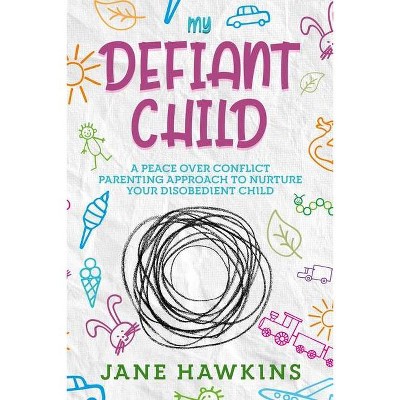Distressed or Deliberately Defiant? - by Judith Howard (Paperback)

Similar Products
Products of same category from the store
AllProduct info
<p/><br></br><p><b> About the Book </b></p></br></br>This book explains the basis for such behaviour as the neurological, physiological and behavioural outcomes of "disorganised attachment" due to prolonged exposure to a traumatic home life and provides practical advice to educators on ways that schools can effectively manage these students.<p/><br></br><p><b> Book Synopsis </b></p></br></br>It is not unusual for educators today, whether in the early childhood, primary or secondary sectors, to be confronted with severely challenging student behaviour - students who fly into unexplained violent and oppositional outbursts with little warning; who respond poorly to tried-and-true behaviour management processes. Such behaviour has considerable impact on the delivery of teaching and learning programs and the emotional wellbeing of the teachers themselves as well as raising safety risks for the entire school community. This book explains the basis for such behaviour as the neurological, physiological and behavioural outcomes of "disorganised attachment" due to prolonged exposure to a traumatic home life and provides practical advice to educators on ways that schools can effectively manage these students. By examining the science behind attachment theory, the neurobiology of behaviour, and the manifestation of disorganised attachment in the school context, this book will help educators: - minimise such challenging behaviour, - manage crises and disciplinary responses such as suspension and expulsion, - improve student compliance, - enhance education and overall wellbeing, - deal with parents.<p/><br></br><p><b> From the Back Cover </b></p></br></br>It is not unusual for educators today, whether in the early childhood, primary or secondary sectors, to be confronted with severely challenging student behaviour - students who fly into unexplained violent and oppositional outbursts with little warning; who respond poorly to tried-and-true behaviour management processes. Such behaviour has considerable impact on the delivery of teaching and learning programs and the emotional wellbeing of the teachers themselves as well as raising safety risks for the entire school community.<BR>This book explains the basis for such behaviour as the neurological, physiological and behavioural outcomes of ""disorganised attachment"" due to prolonged exposure to a traumatic home life and provides practical advice to educators on ways that schools can effectively manage these students. By examining the science behind attachment theory, the neurobiology of behaviour, and the manifestation of disorganised attachment in the school context, this book will help educators: <BR>- minimise such challenging behaviour, <BR>- manage crises and disciplinary responses such as suspension and expulsion, <BR>- improve student compliance, <BR>- enhance education and overall wellbeing, and<BR>- deal with parents. <BR>Covers early childhood, primary and secondary settings.<p/><br></br><p><b> Review Quotes </b></p></br></br><br>She is considered a leader in the field of behaviour management in schools. As a psychologist working across schools in a Regional role, I have seen first hand the positive outcomes for students (and staff) in schools that have benefited from Dr Howard's practical advice and therefore strongly recommend her book to educators and parents.--Lex Bell (Psychologist) Guidance Officer<br><p/><br></br><p><b> About the Author </b></p></br></br>Dr Judith Howard is the Regional Manager for Behaviour Support Services for the Department Education Training and Employment in Queensland where she oversees a specialist intervention team, student support programs and training. She has previously worked as an educator, a child and adolescent behaviour specialist, a school counsellor and a researcher. Dr Howard has a passion for educating educators and other professionals from government and non-government agencies who are involved in the support of children and young people who present with challenging behaviour and attachment/ trauma related backgrounds, with the goal of enhancing collaborative child and adolescent support practices
Price History
Cheapest price in the interval: 18.89 on October 22, 2021
Most expensive price in the interval: 18.89 on December 20, 2021
Price Archive shows prices from various stores, lets you see history and find the cheapest. There is no actual sale on the website. For all support, inquiry and suggestion messagescommunication@pricearchive.us




















